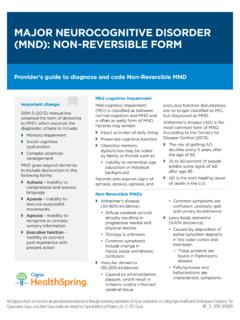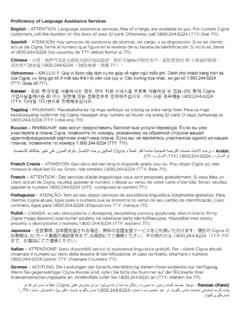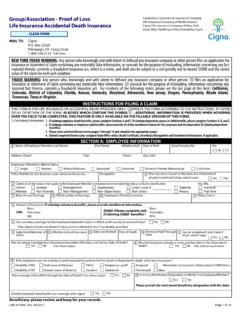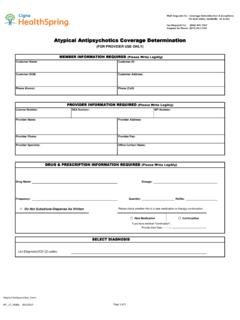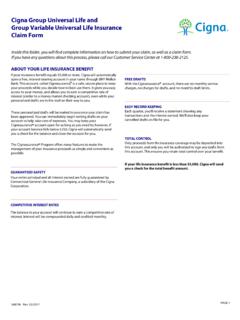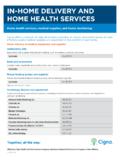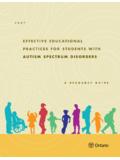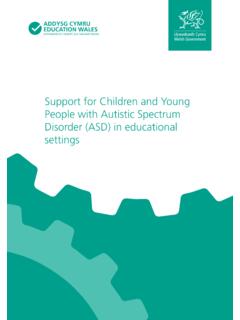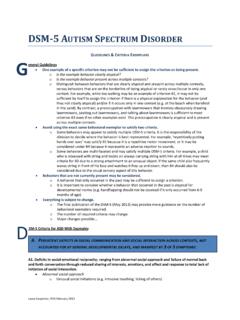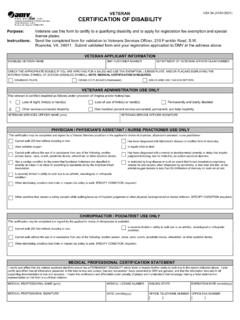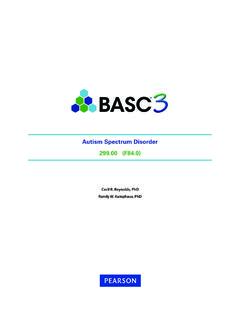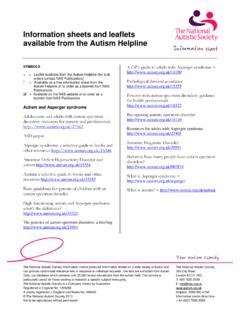Transcription of Evidence-Based Teaching Strategies for Individuals with …
1 1 Evidence-Based Teaching Strategies for Individuals with autism spectrum Disorder Presented by Maegen Pierce, BCBA Founder and Executive Director Breakthrough Behavior 2 About the Presenter Maegen Pierce is the Founder and Executive Director of Breakthrough Behavior, a Florida-based ABA agency. With more than ten years experience in the applied behavior analysis field, Maegen founded Breakthrough Behavior with the mission to provide highly effective and accessible services to Individuals with autism . As a Board Certified Behavior Analyst (BCBA), she has specialized in school, clinic and private home therapy, providing a unique and personalized treatment plan for hundreds of clients throughout the United States.
2 Maegen received her bachelor's degree in psychology with an emphasis in ABA from California State University, Fresno and master's degree in Special Education from California State University, Monterey Bay. 3 Objectives is ABA Therapy? research on Teaching Strategies about Evidence-Based Teaching Strategies 4 ABA and Evidence-Based Strategies Applied Behavior Analysis (ABA) Therapy is a widely excepted and clinically proven treatment for developmental disabilities, including autism . ABA therapy involves focusing on principles and Teaching Strategies to teach an individual new skills. ABA uses only Teaching Strategies that have been clinically proven to be effective.
3 ABA is the use of these techniques to bring about positive and meaningful change in behavior. 5 What Does the Research Say? 6 Research on Evidence-Based Practices A few years ago, both the National Professional Development Center on ASD and National Standards Project studied a variety of research-based ABA Strategies for Teaching students with autism to determine what makes ABA an effective Teaching methods. Specifically, they examined what ABA Strategies are Evidence-Based practices that should be used / recommended when Teaching Individuals with ASD. 2009 2014 7 Research on Evidence-Based Practices They determined 27 Evidence-Based practices shown to be effective treatment Strategies for working with Individuals with autism .
4 8 ABA and Evidence-Based Strategies A number of peer-reviewed studies have examined the benefits of combining multiple Evidence-Based Strategies into comprehensive, individualized programs. Comprehensive refers to interventions that address a full range of skills using a combination of different Evidence-Based Strategies . A comprehensive ABA program will utilize multiple Strategies , but should only include interventions that are Evidence-Based . 9 Interventions Used in ABA Therapy 10 27 Evidence-Based Strategies in ABA Antecedent-based Interventions Antecedent-based interventions can be used to decrease a problem behavior and increase engagement by making changes to the environment to prevent behavior from occurring.
5 Differential Reinforcement of Alternative, Incompatible, or Other Behavior (DRA, DRI, DRO) Differential reinforcement of other behaviors means that reinforcement is provided for desired behaviors, while inappropriate behaviors are ignored. Reinforcement can be provided: (a) when the learner is not engaging in the problem behavior, (b) when the learner is engaging in a specific desired behavior other than the problem behavior, or (c) when the learner is engaging in a behavior that is physically impossible to do while engaging in the problem behavior. 11 27 Evidence-Based Strategies in ABA Discrete Trial Training (DTT) Discrete trial training consists of an adult using adult-directed, repeated instruction, reinforcers, and clear contingencies and repetition to teach a new skill or behavior.
6 Exercise Exercise can be used to improve the physical fitness of learners with autism . In addition, exercise can be used to increase desired behaviors (time on task, correct responding) and decrease inappropriate behaviors (aggression, self-injury). Extinction Extinction involves removing the positive reinforcement that maintains an inappropriate behavior. 12 27 Evidence-Based Strategies in ABA Functional Behavior Assessment A functional behavior assessment can be used when the intensity, duration, or type of interfering behavior creates safety concerns or impacts a child s development. Functional Communication Training (FCT) FCT is used to identify and teach a replacement behavior that is easy for the learner to use and serves the same purpose as a problem behavior but is easier to use.
7 Modeling Modeling involves giving an individual a visual of what is expected. In other words, you teach the individual by demonstrating the expected behavior. 13 27 Evidence-Based Strategies in ABA Naturalistic Teaching This intervention involves Teaching skills within the natural environment and using naturally occurring reinforcers. Parent-implemented Intervention Parent-implemented Intervention entails parents directly using individualized intervention practices with their child to increase positive learning opportunities and acquisition of important skills. Parents learn to implement such practices in their home and/or community through a structured parent training program.
8 Peer-mediated Instruction This intervention involves systematically Teaching peers without disabilities ways of engaging learners with autism in positive and meaningful social interactions. 14 27 Evidence-Based Strategies in ABA Picture Exchange Communication System (PECS) The Picture Exchange Communication System (PECS) is used to teach learners with limited functional communication skills to initiate communicative exchanges and interactions within a social context by using pictures or drawings of items. Pivotal Response Training (PRT) Rather than target individual behaviors, the PRT therapist targets pivotal areas of a child's development.
9 These include motivation, response to multiple cues, self-management and the initiation of social interactions. The philosophy is that, by targeting these critical areas, PRT will produce broad improvements across other areas of sociability, communication, behavior and academic skill building. 15 27 Evidence-Based Strategies in ABA Prompting Prompting is acting or doing something that reminds or helps the learner to complete the task or demand. Reinforcement Reinforcement presents or removes something that increases the probability of the behavior to occur again. This occurs immediately following a response.
10 Redirection Redirection involves interrupting an inappropriate behavior and redirecting the individual to do something more appropriate. Scripting Scripting involves telling the individual over and over exactly what to expect in a situation or what is expected of them in a given situation. 16 27 Evidence-Based Strategies in ABA Self-Management Self-management teaches Individuals to discriminate between appropriate and inappropriate behavior, accurately monitor and record their own behaviors, and reward themselves for appropriate behavior or use of skill. Social Narratives Social narratives describe social situations for learners by providing relevant cues, explanation of the feelings and thoughts of others, and descriptions of appropriate behavior expectations.
